Here's The Best Type Of Chocolate For Baking Cookies (Based On Science)
After baking countless batches of cookies, we finally have an answer. #BFChocolateChipCookie
Welcome to BuzzFeed's Best Chocolate Chip Cookie Guide. Over the past few weeks we've baked over 400 cookies — testing every possible variable from dough temperature to sugar variety in an attempt to find the best possible formula. You can get an overview of the entire experiment here.

We've finally made it to the holy grail of chocolate chip cookies: the chocolate. There's a common misconception that chocolate plays a rather straightforward role in cookies. Sure, they offer a certain amount of sweetness, along with that telltale mouthfeel that you've come to expect when you bite into a melty pool of chocolate. But more often than not, we think the variation in chocolate used only affects the flavor of the overall cookie when in reality there is so much more at play.
Cacao percentages can definitely impact the flavor and texture of your cookie, but a factor that's often overlooked is the cut of the chocolate. Chocolate will provide much-needed fat for your chocolate chip cookie, but it will also contribute to the cookie's structure. Of course, each chef has their preferences, but with so many choices (chips, chunks, flat baking discs, etc.), it's hard to know which one is the best.
"Beyond chocolaty flavor, there are scientific considerations to selecting your chocolate for baking," says Zac Young, pastry director for Craveable Hospitality Group. "Chocolate chips were specially developed for baking by manipulating the fat and sugar content so they melt and get gooey, but don't scorch and burn. The classic composition of chocolate (cocoa liquor + cocoa butter + sugar) is not very stable at 350°F, so additional
fat and emulsifiers are added to soften the heat blow." So, needless to say, figuring out which chocolate is the best is more complicated than it may sound.
So, to help us better understand how chocolate affects cookies, we decided to test six batches of cookies and compare them in a side-by-side taste test. We stuck to six of the most popular varieties of chocolate that professional bakers swear by and kept all other variables the same. We used the classic Nestlé Toll House cookie formula as our base recipe and simply swapped out the chocolate type, keeping the quantity the same.
If you can't see the sign-up box above, just enter your email address here.
Here are the six chocolate types we tested and how they affected the cookie:
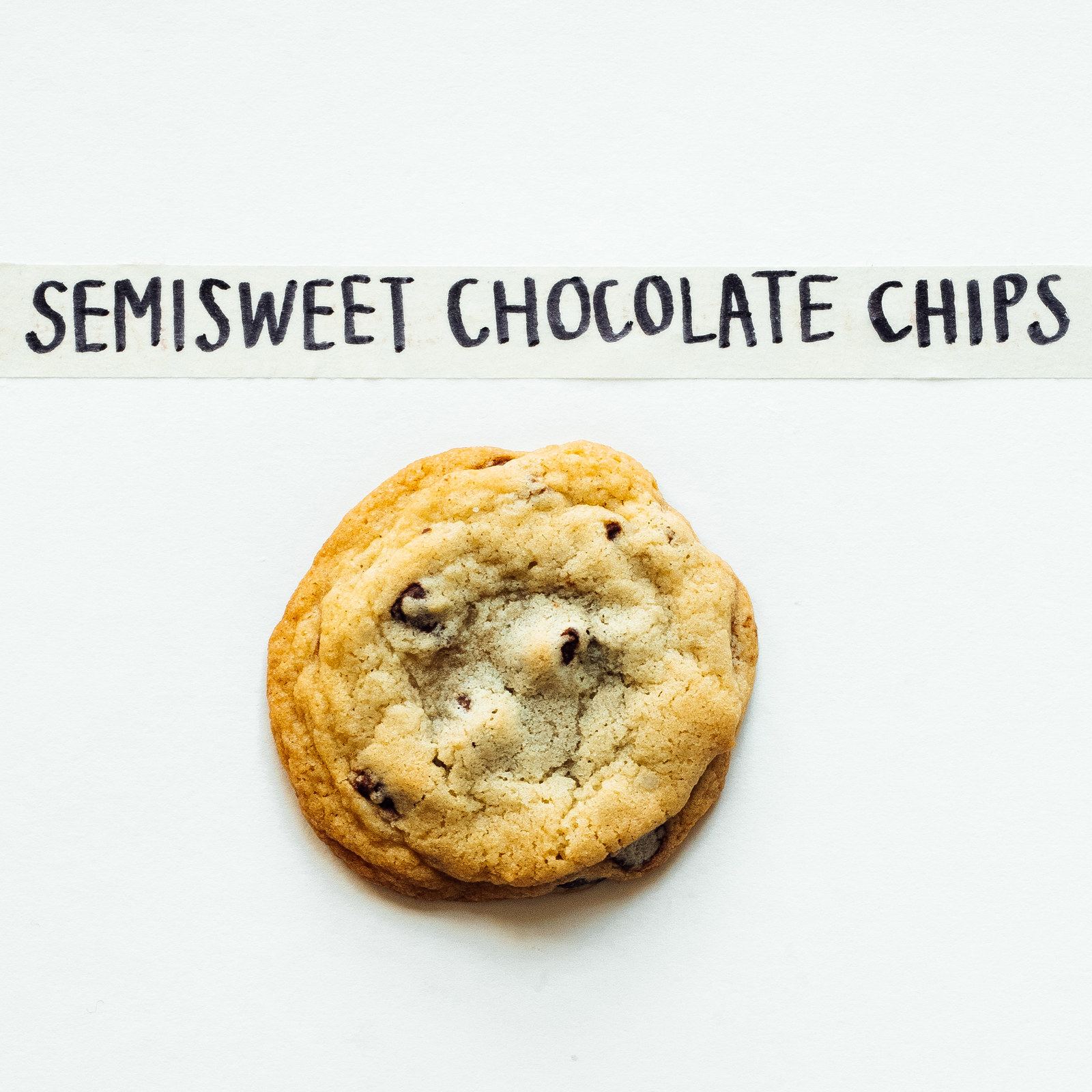
The Science / What We're Expecting: When you were young, you may have believed that chocolate always came in "chip" form. But what you probably didn't know, however, is that Nestlé didn't even start making those infamous chips until the cookie went "viral" (or whatever it was called back then). They launched the signature chip in 1941, and there's been no looking back.
With a 40–70% cacao percentage and lower sugar-to-cocoa ratio, semisweet chips remain the go-to choice. They shine through the dough and retain their shape, giving you distinct pockets of chocolate among each dollop of dough. In short, the semisweet chip is just as reliable as the Toll House cookie recipe that made it famous.
The Test: Use only semisweet chocolate chips in the cookie recipe. (This is what is called for in the control recipe.)
The Results: This produced your standard, run-of-the-mill cookie. The chocolate was sweet (but not too sweet) and provided a classic taste and texture. It looked and tasted exactly how you would expect a homemade cookie would. The only issue is that the chocolate chips held their shape a little too much, and it was almost as if they never fully melted.
Overall Rating: 5/10

The Science / What We're Expecting: Much of the characteristics of semisweet chocolate chips apply to its sweeter, more indulgent counterpart as well. Serving the dual function of fat and texture contribution, the benefit of the "chip" remains its shape. However, the milk chocolate carries a signature silkiness and decadence, not to mention a higher sugar level.
Milk chocolate chips are composed from a pretty simple set of ingredients: sugar, cocoa butter, cocoa solids, and milk. They're mainly stabilized using lecithin, so while that might play a part in their slightly waxy texture, it also means that the chips remain as is, even after you pull the cookies out of the oven. If you prefer a sweeter chocolate, this option might be for you.
The Test: Swap the semisweet chocolate chips, originally in the recipe, for milk chocolate chips. All other variables kept as is.
The Results: Unsurprisingly, milk chocolate chips proved to be too sweet for this recipe. While the texture was a bit silkier than the batch made with semisweet chips, the flavor was cloyingly sweet. If you want to use chips, we suggest sticking to ones with a higher cocoa percentage to balance the flavor.
Overall Rating: 4/10
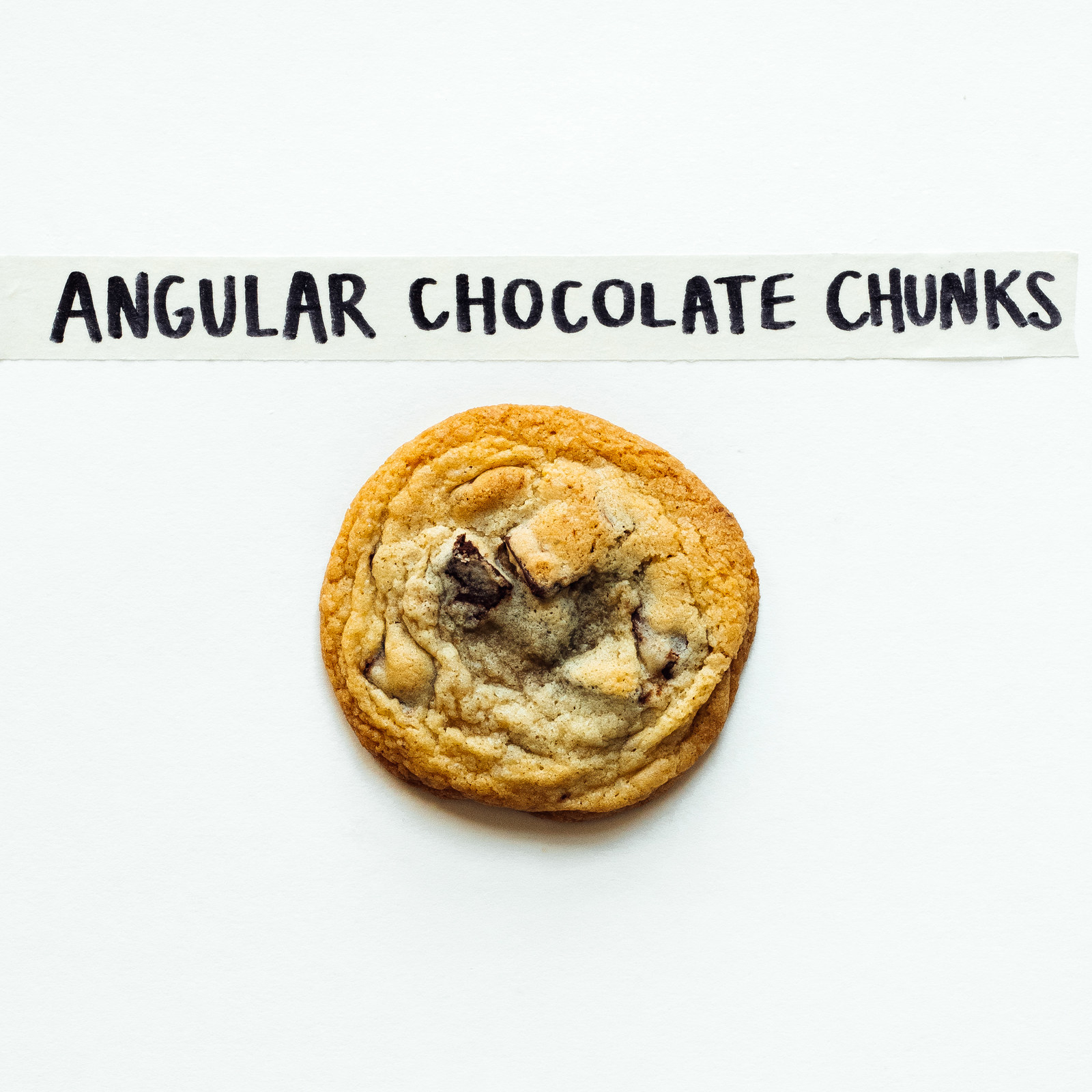
The Science / What We're Expecting: There's a running debate as to whether chocolate chunk cookies are different than chocolate chip cookies. There's also a running debate as to which one is better. We haven't had any definitive answers yet, but we'll be sure to keep you posted. (Don't hold your breath, though. The chunks have a fan following of their own.) Their unique appeal lies in their jagged edges. Not only do they not have the waxy exterior that chips often do, but they are larger as well.
Sure, there's a bit of uniformity given that the chunks are purchased as chunks rather than hand-chopped, but overall, they give the cookie a more rustic charm while still allowing the chocolate to melt into the dough. The anticipated result? Large pools of melted, rich chocolate.
The Test: Swap the semisweet chocolate chips, originally in the recipe, for angular chocolate chunks. All other variables kept as is.
The Results: These cookies looked amazing. The jagged edges of the chocolate chunks poked through the top of the cookie and made them very attractive. The flavor was similar to the semisweet chocolate chips but melted into large pools, making them more decadent. The chunks were a clear upgrade from the chips.
Overall Rating: 7/10

The Science / What We're Expecting: The following two variables come with a disclaimer: chopped chocolate is labor-intensive. Now, this isn't to discourage you from doing it; it's just to warn you that your knife skills might need a bit of sharpening (no pun intended) before you attempt chopping massive amounts of chocolate.
There are many benefits — maybe — to using chopped chocolate. For starters, they make for perfectly gooey cookies. Why, you might ask? Because a rough chop is going to result in larger chunks juxtaposed against micro-fragments and tiny shards that envelop your whole cookie. Some chefs, of course, will prefer their chunks at a certain size, but it's really up to you, and that's the beauty of it all. Not to mention, you can still get that classic Toll House taste with the semisweet variety.
The Test: Swap the semisweet chocolate chips, originally in the recipe, for chopped semisweet chocolate chunks. All other variables kept as is.
The Results: These cookies not only had a balance and pronounced chocolate flavor, but a unique texture, too. The chocolate melted into the dough as it baked and completely changed the texture of the dough. The outside was shiny and crisp while the inside was dense and fudge-like. The roughness of the chocolate gave these cookies a more gourmet appearance instead of the mass-produced look of chips. Sure, it requires extra effort, but the results proved 100% worth it.
Overall Rating: 9/10
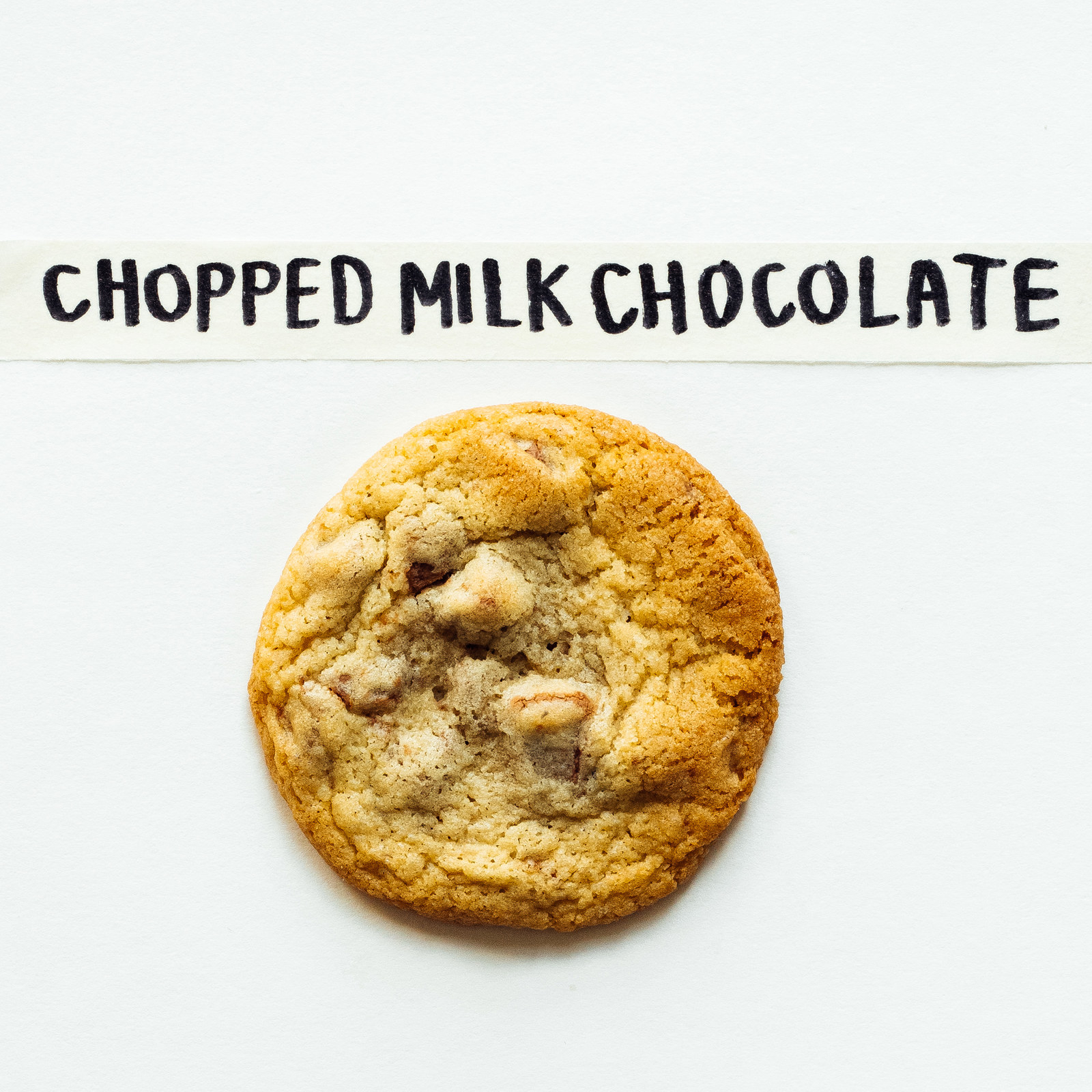
The Science / What We're Expecting: Just like its predecessor, this chopped variety is no easier to obtain and knife skills are a must. But if roughly chopping massive bars isn't doing it for you, feel free to use a little hack and shave at the edges with a serrated knife to get larger shards that you can then break down further with a food processor, bringing you one step closer to that milky bite.
This variant is going to bring together the best of chopped chocolate with a sweeter, smoother blend. However, by going the chopped route, you're eliminating the waxy finish that might steer you away from uniform chips.
The Test: Swap the semisweet chocolate chips, originally in the recipe, for chopped milk chocolate. All other variables kept as is.
The Results: Just like the semisweet chopped chocolate, this swap-in significantly changed the texture of the dough. They were dense with a crisp exterior and looked more "gourmet" than the cookies made with chips. The only issue (much like the milk chocolate chips) is that these cookies were just too darn sweet. As it turns out, milk chocolate isn't the best option for chocolate chip cookies.
Overall Rating: 7/10
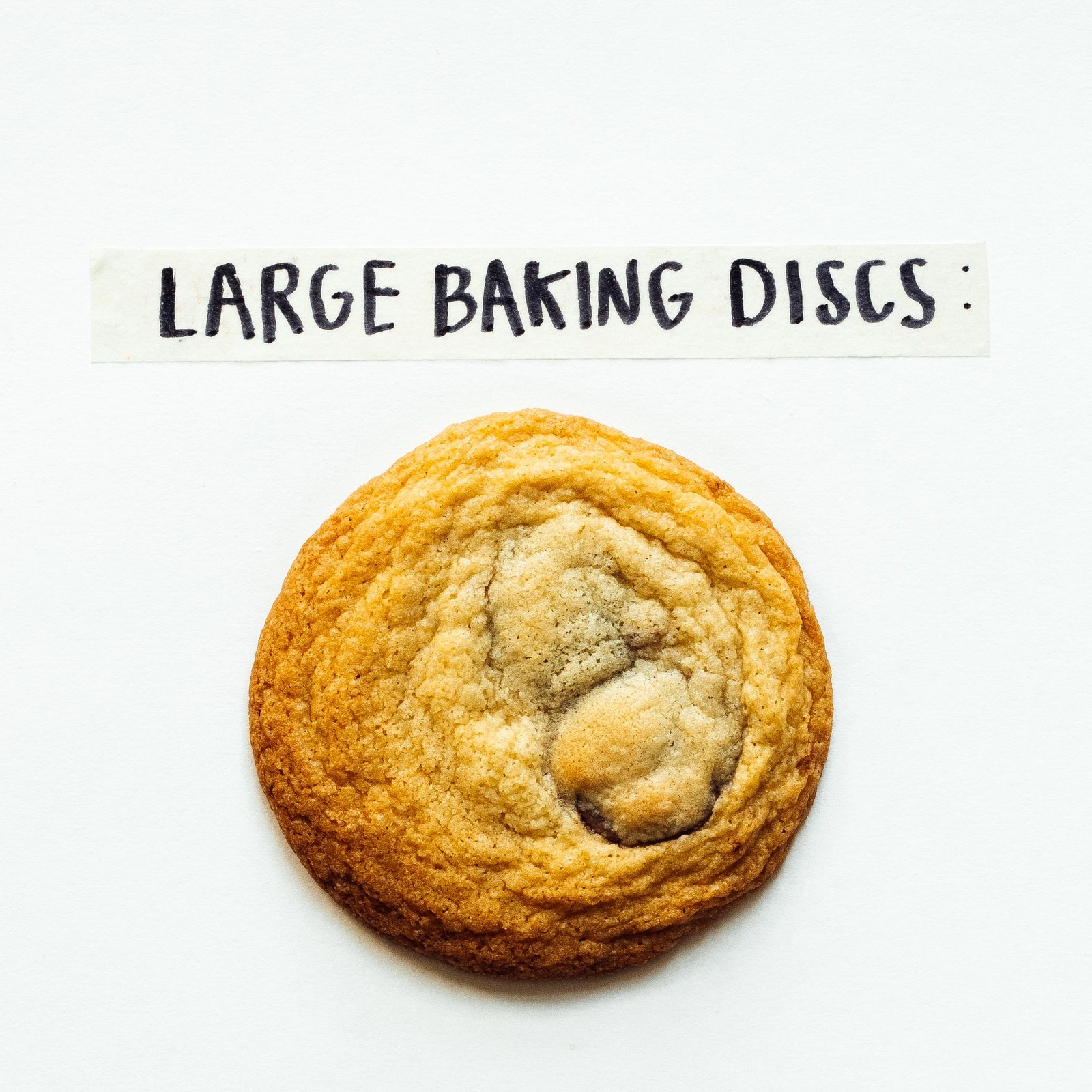
The Science / What We're Expecting: A baking disc is a popular variety of chocolate for professional pastry chefs, but not so much for home bakers. Our research tells us that the discs, often flattened in shape (similar to candy melts), give you a relatively even dispersal of chocolate throughout the cookie. Because of their higher cocoa butter content, they tend to melt easier, leading to a flatter cookie with large pools of melted chocolate (or so we'd expect).
The Test: Swap the semisweet chocolate chips, originally in the recipe, for large baking discs. All other variables kept as is.
The Results: As it turns out, there is such a thing as too much chocolate. The discs were simply too darn big and pooled in the middle — leaving the edges of the cookies completely void of chocolate. The shape of the discs also caused the cookies to come out flat and rather unattractive. Very disappointing. Pastry chef Zac Young actually warned us that he finds chocolate discs to be "awkwardly sized for cookies and too big for anything other than jumbo cookies" — so we should have known better.
Overall Rating: 0/10
The Biggest Takeaways:
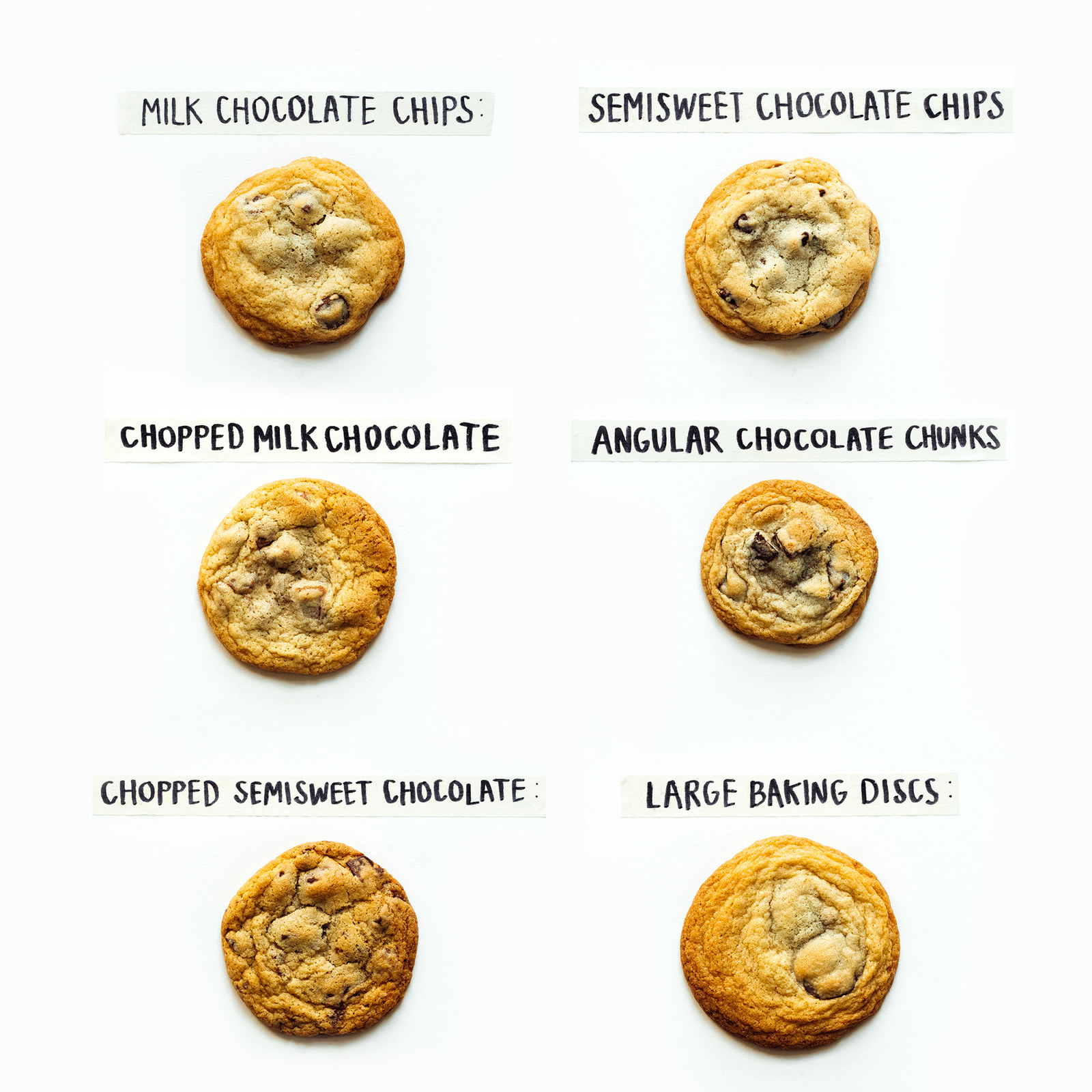
What We Learned: As it turns out, chocolate is a key component of not only a cookie's flavor, but its texture and appearance as well. Chopped chocolate made the cookies denser and more fudge-like — and using a chocolate with a higher cocoa percentage helped balance the sweetness.
The Biggest Takeaways: When it comes to picking out which chocolate you should use to make your cookies, keep these things in mind.
1. Chopped chocolate drastically changes the texture of cookies: Not only does chopped chocolate look better, but it significantly improves the texture of the cookies. The small micro-shards melt into the dough and give it a dense and fudge-like texture.
2. Stick to a chocolate with a cocoa percentage of at least 60% to balance the sweetness of the dough: Otherwise your cookie will turn out cloyingly sweet.
3. Chocolate baking discs are overhyped: They are expensive, hard to get, and made the cookies flat. Sorry Jacques Torres, but baking discs are a no from us!
4. Chocolate chips don't fully melt: Due to their slightly waxy texture, chocolate chips remained semi-solid after coming out of the oven. Sure, they melted, but they didn't fully transform into decadent pools of molten chocolate.
This post is part of BuzzFeed's Best Chocolate Chip Cookie Guide. To read through the entire experiment, click through the links below:
Main Post | Sugar Type | Fat Type | Flour Type | Leavening Agent | Dough Age + Temperature | BuzzFeed's Best Chocolate Chip Cookie Recipe

